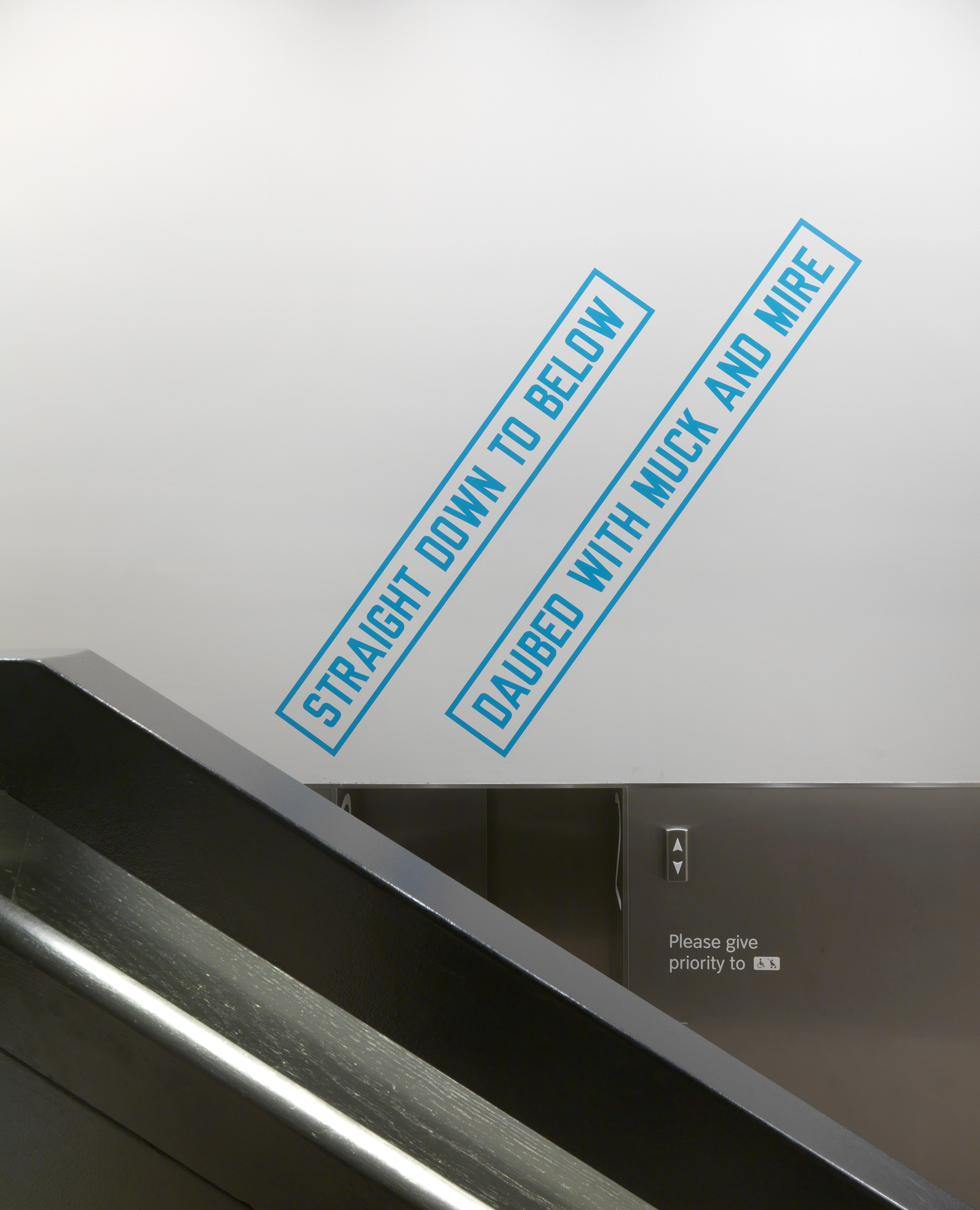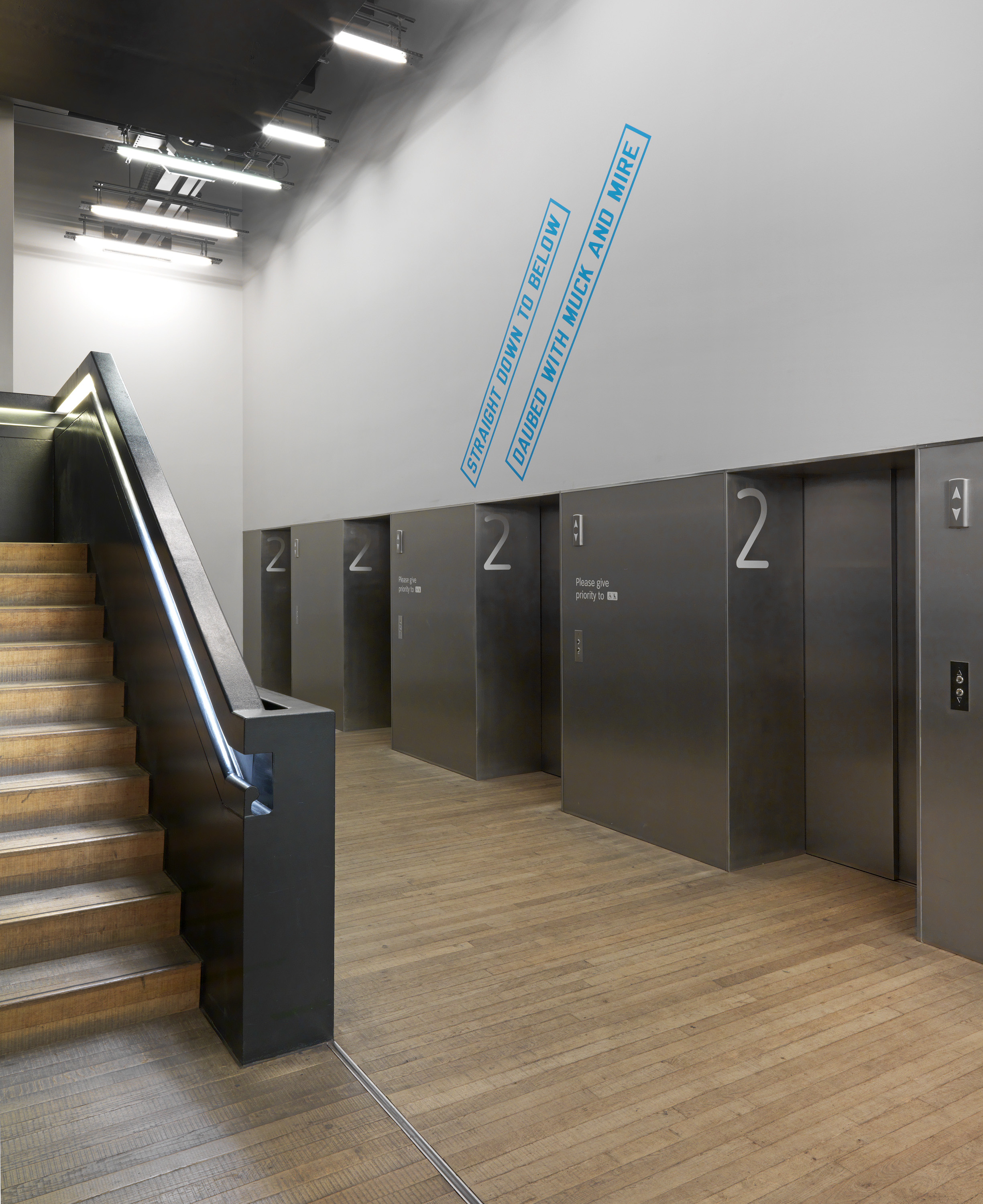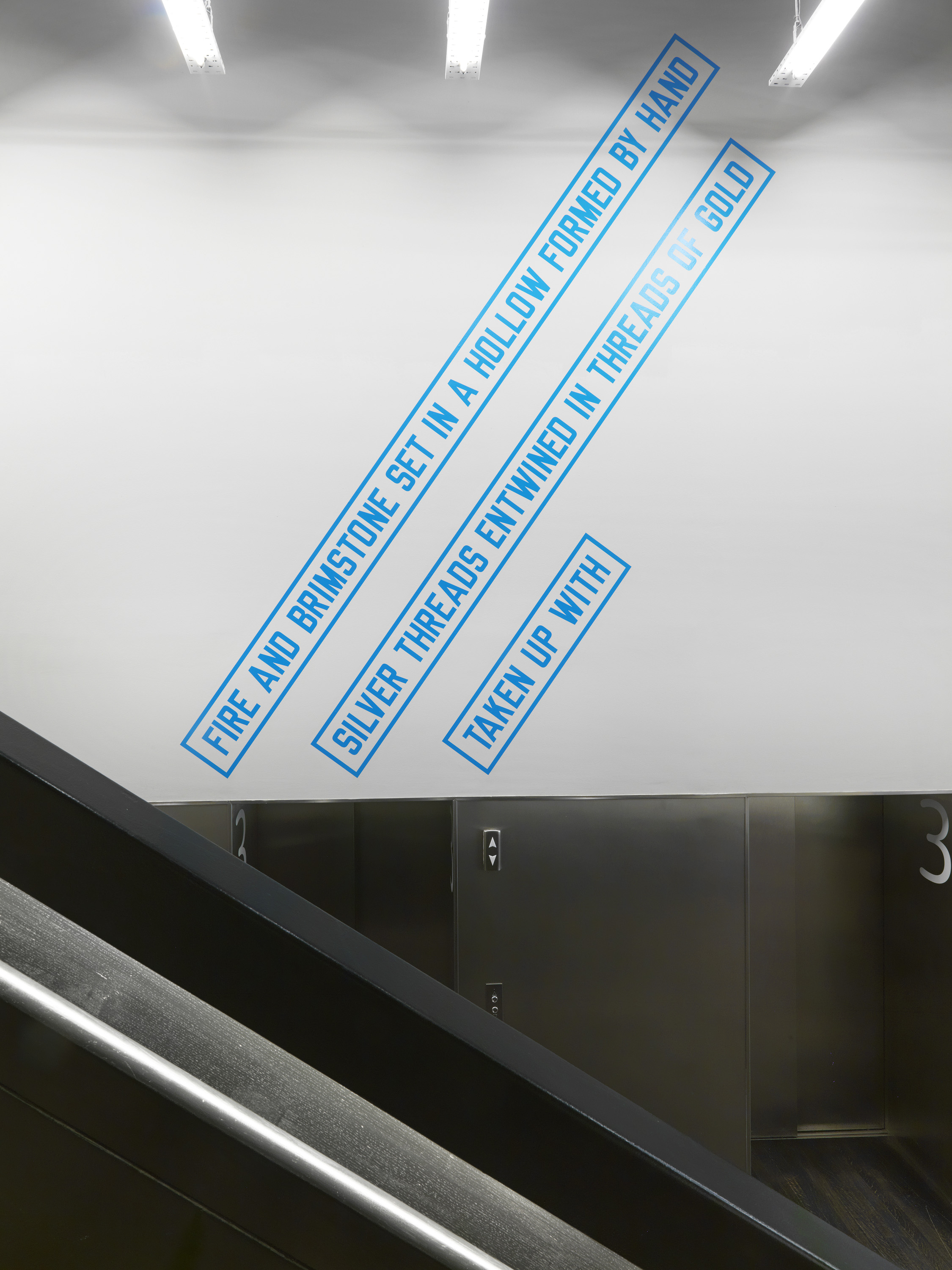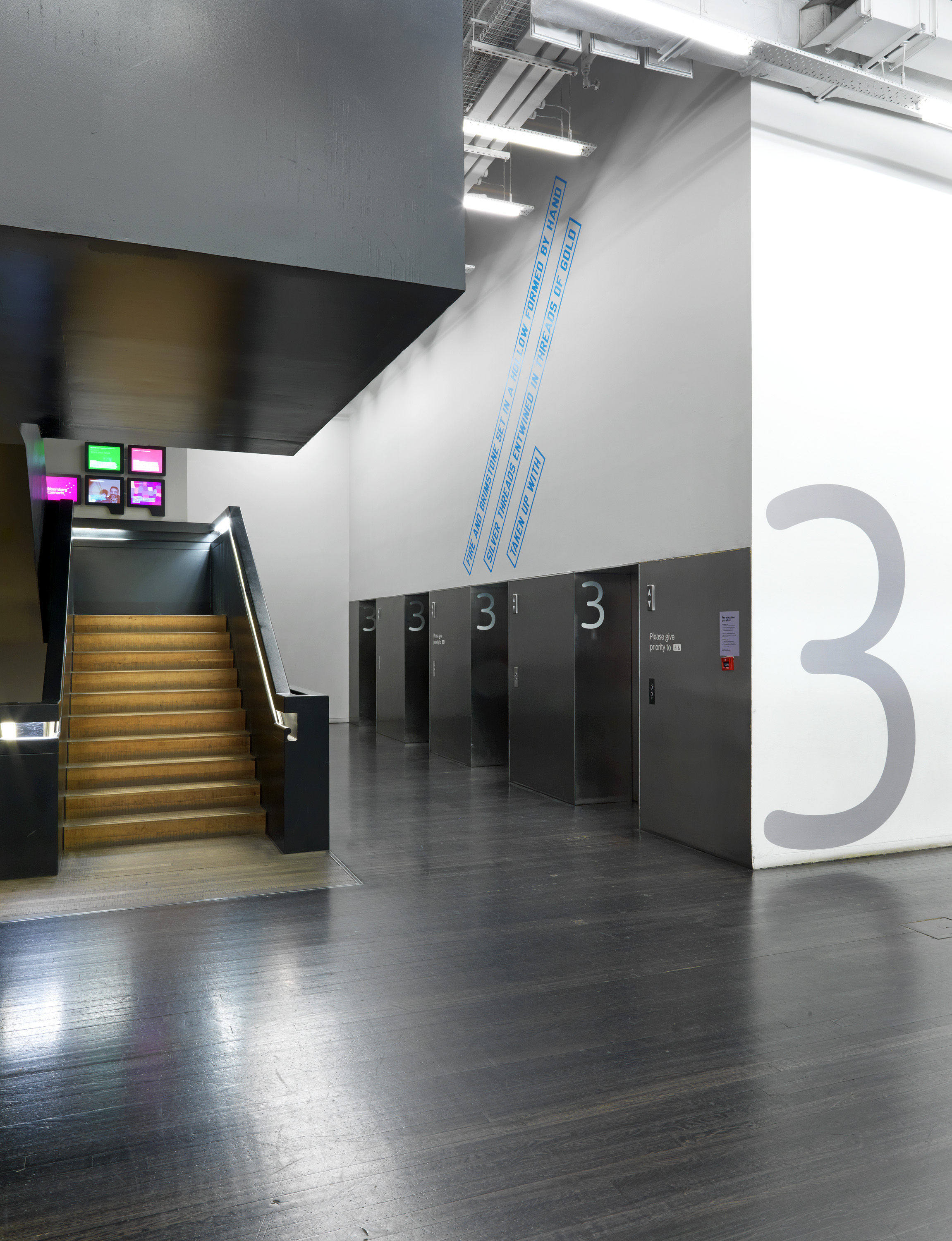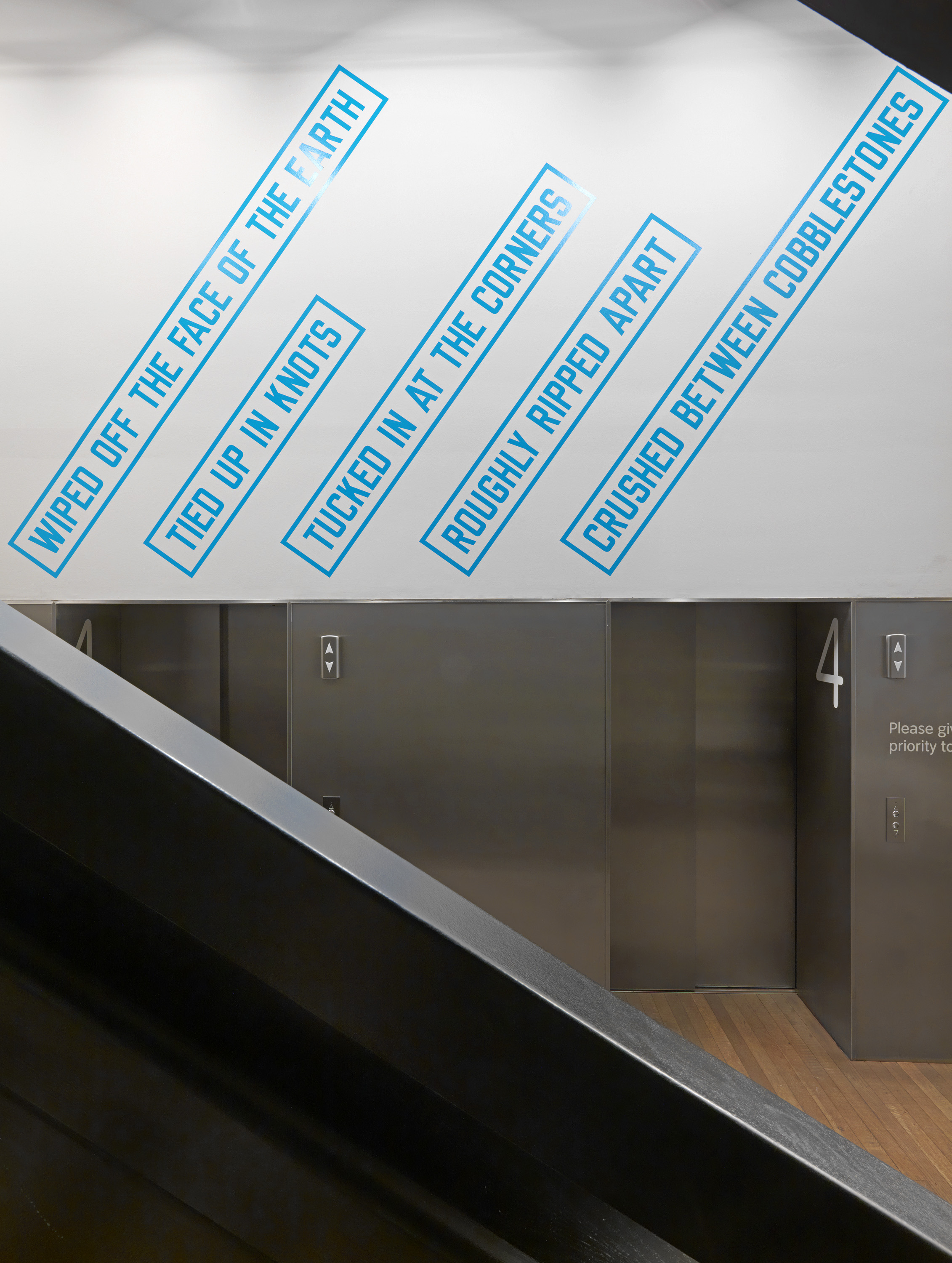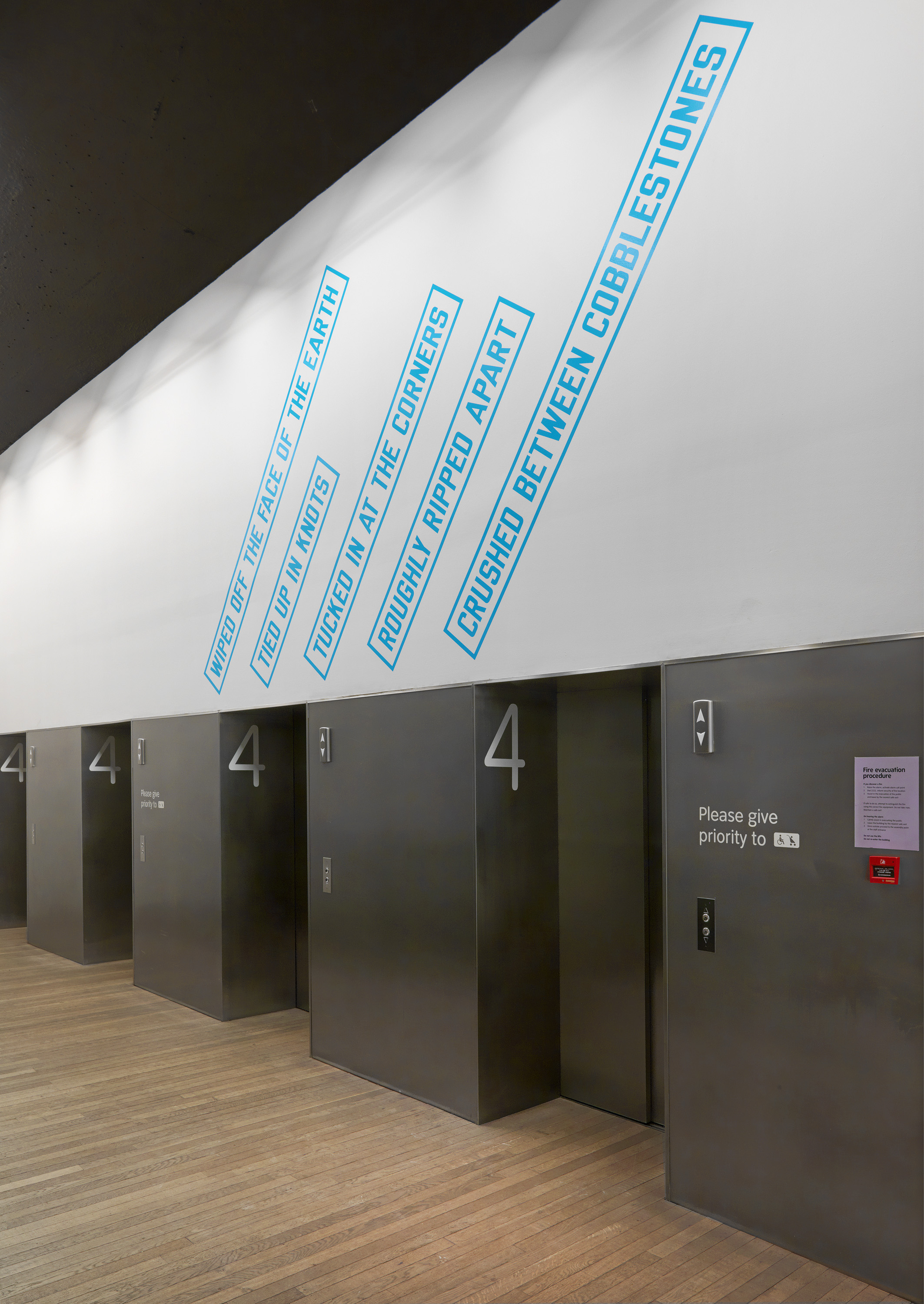Lawrence Weiner, London
Date
-
Location
Tate Modern
About
This display, curated by Matthew Gale and Valentina Ravaglia, presents the work of Lawrence Weiner, one of the foremost practitioners of Conceptual Art.
Weiner’s work focuses on the interaction between the artwork and the ‘receiver’ – his term for the audience who encounters the work in some form and chooses to engage with it through thoughts or actions. Weiner defines his medium as ‘language + the material referred to’, emphasising the flexibility of their presentation: these works have no particular physical form in themselves and only exist as language, with the potential to be displayed or otherwise transmitted. So far, Weiner’s statements have taken the form of text inscribed in gallery or public spaces, books and posters, cast or carved objects, spoken dialogue in audio and video works, song lyrics and even tattoos.
Installed on Levels 2, 3 and 4, this cycle of works from 1988 consists of ten statements, each suggesting a physical action or invoking the manipulation of an object or material. In fact, Weiner regards his statements as sculpture rather than poetry, explaining that ‘they show the relationship of object to object and that is the idea and purpose of a sculpture’.
Find out more about Lawrence Weiner

